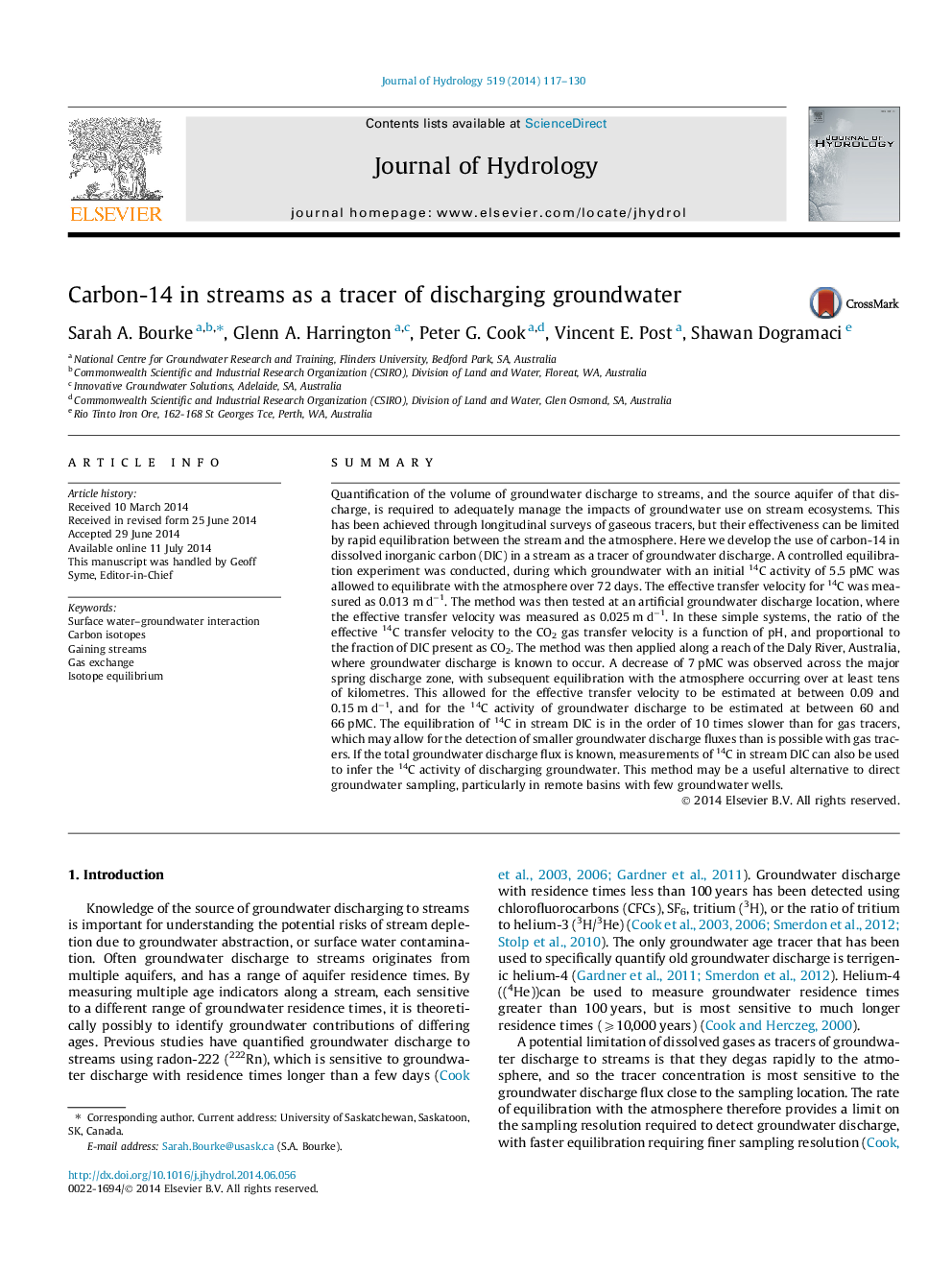| کد مقاله | کد نشریه | سال انتشار | مقاله انگلیسی | نسخه تمام متن |
|---|---|---|---|---|
| 6412346 | 1332898 | 2014 | 14 صفحه PDF | دانلود رایگان |
- Carbon-14 in streams used to quantify groundwater discharge and carbon-14 activity.
- Controlled isotopic equilibration experiment followed by two field applications.
- Equilibration rate of carbon-14 with atmosphere slower than other gaseous tracers.
- Slower equilibration allows larger sampling interval and capture of smaller fluxes.
- Stream carbon-14 can be used to infer carbon-14 of discharging groundwater.
SummaryQuantification of the volume of groundwater discharge to streams, and the source aquifer of that discharge, is required to adequately manage the impacts of groundwater use on stream ecosystems. This has been achieved through longitudinal surveys of gaseous tracers, but their effectiveness can be limited by rapid equilibration between the stream and the atmosphere. Here we develop the use of carbon-14 in dissolved inorganic carbon (DIC) in a stream as a tracer of groundwater discharge. A controlled equilibration experiment was conducted, during which groundwater with an initial 14C activity of 5.5 pMC was allowed to equilibrate with the atmosphere over 72 days. The effective transfer velocity for 14C was measured as 0.013 m dâ1. The method was then tested at an artificial groundwater discharge location, where the effective transfer velocity was measured as 0.025 m dâ1. In these simple systems, the ratio of the effective 14C transfer velocity to the CO2 gas transfer velocity is a function of pH, and proportional to the fraction of DIC present as CO2. The method was then applied along a reach of the Daly River, Australia, where groundwater discharge is known to occur. A decrease of 7 pMC was observed across the major spring discharge zone, with subsequent equilibration with the atmosphere occurring over at least tens of kilometres. This allowed for the effective transfer velocity to be estimated at between 0.09 and 0.15 m dâ1, and for the 14C activity of groundwater discharge to be estimated at between 60 and 66 pMC. The equilibration of 14C in stream DIC is in the order of 10 times slower than for gas tracers, which may allow for the detection of smaller groundwater discharge fluxes than is possible with gas tracers. If the total groundwater discharge flux is known, measurements of 14C in stream DIC can also be used to infer the 14C activity of discharging groundwater. This method may be a useful alternative to direct groundwater sampling, particularly in remote basins with few groundwater wells.
Journal: Journal of Hydrology - Volume 519, Part A, 27 November 2014, Pages 117-130
